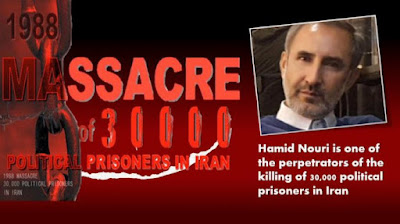احمد رئوف بشری دوست در اول شهریور ۱۳۴۳ در آستارا در یک خانواده اهل رشت به دنیا آمد. پس از پایان تحصیلات ابتدایی
و راهنمایی، احمد به دلیل علاقه و استعداد در کارهای فنی در رشته الکترونیک هنرستان صنعتی رشت ثبت نام کرد.
ورود به هنرستان آن هم همزمان با انقلاب ضدسلطنتی، احمد ۱۳ ساله را با مبارزه و فعالیت سیاسی آشنا می کند؛ از آن پس او در تمامی حرکتهای اعتراضی و تظاهرات علیه شاه فعال بود.
پس از پیروزی انقلاب ضدسلطنتی احمد رئوف بشری دوست به جنبش ملی مجاهدین در رشت می پیوندد. در طی دو و نیم سال مبارزه سیاسی وی دو بار دستگیر و شکنجه می شود.
احمد رئوف بشری دوست پس از شرکت در تظاهرات ۳۰ خرداد ۱۳۶۰ به دلیل شناخته شدگی به زندگی مخفی روی می آورد. در اوایل اردیبهشت ۱۳۶۱ وی در حمله ماموران حکومتی به خانه اش دستگیر می شود؛ و پس از چند دوره بازجویی و شکنجه توسط مقدسی فر حاکم شرع رشت به ۵ سال زندان محکوم و به زندان باشگاه افسران رشت منتقل می شود.
در ۲۲ اسفند ۱۳۶۱ ماموران حکومتی زندان باشگاه افسران رشت را به آتش می کشند و به روی زندانیان سیاسی که سعی در فرار از شعله های آتش داشتند، شلیک می کنند که در جریان آن ۷ زندانی هوادار سازمان مجاهدین جان خود را از دست می دهند. احمد رئوف بشری دوست در جریان آتش سوزی از هوش می رود و توسط یک زنداني نجات پیدا می کند.
در خرداد ۱۳۶۲ محسن خداوردی دادستان رشت احمد را به همراه ۴۰ زندانی دیگر از رشت به زندان اوین و سپس گوهردشت کرج تبعید می کند.
احمد رئوف بشری دوست در زمستان ۱۳۶۶ پس از گذراندن بیش از ۵ سال زندان آزاد می شود. در بهار ۱۳۶۷ وی به قصد پیوستن مجدد به سازمان مجاهدین خلق ایران از رشت خارج می شود اما مجددا دستگیر و راهی زندان می شود.
در مرداد سال ۱۳۶۷ پاسداران زندانیان سیاسی که اغلب آنان از سازمان مجاهدین خلق ایران بودند را با ۲ مینی بوس به بهانه انتقال به زندان تبریز از زندان ارومیه خارج کرده و به تپه های اطراف دریاچه ارومیه می برند. در آن منطقه که از قبل تحت کنترل پاسداران قرار داشت تعدادی پاسدار با انواع آلات قتاله سرد از قبیل چاقو، قمه، چماق، تبر و ساطور منتظر این زندانیان بودند و زندانیان را در حالیکه دست و پایشان بسته بود مورد حمله قرار داده و سلاخی می کنند.
سال ۱۳۷۰ ماموران وزارت اطلاعات به پدر احمد رئوف بشری دوست می گویند که او را در زندان ارومیه اعدام کرده ایم و حتی از گفتن محل دفن او به خانواده اش دریغ می کنند.
خواهر احمد در گزارشی نوشته است که در اسفند ۱۳۶۶ نامه ای از وی دریافت می کند که در بخشی از نامه نوشته شده بود: «اگر بخواهم از آنچه در این سالها بر من گذشت برایت بنویسم مثنوی هفتاد من کاغذ می شود. پس شرح این هجران و این خون جگر – این زمان بگذار تا وقت دگر»
سازمان ملل متحد و جامعه بین المللی باید قتل عام زندانیان سیاسی در سال ۱۳۶۷ در ایران را به عنوان نسل کشی و جنایت علیه بشریت به رسمیت بشناسد.
شورای امنیت سازمان ملل متحد باید برای به محاکمه کشیدن سران رژیم حاکم بر ایران به ویژه خامنه ای، رئیسی و رئیس قوه قضائیه اش اژه ای به دلیل ارتکاب جنایت علیه بشریت و نسل کشی، دست به اقدام فوری بزند.









